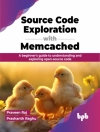A new product can be easy or difficult to use, it can be efficient or cumbersome, engaging or dispiriting, it can support the way we work and think – or not. What options are available for systematically addressing such parameters and provide users with an appropriate functionality, usability and experience? In the last decades, several fields have evolved that encompass a user-centred approach to create better products for the people who use them. This book provides a comprehensible introduction to the subject. It is aimed first and foremost at people involved in software and product development – product managers, project managers, consultants and analysts, who face the major challenge of developing highly useful and usable products. Topics include:
- The most important user-centred techniques and their alignment in the development process
- Planning examples of user-centred activities for projects
- User-oriented approaches for organisations
- Real-life case studies
- Checklists, tips and a lot of background information provide help for practitioners
表中的内容
Foreword.- Introduction.- A user-centred process.- The 7±2 most important user-centred techniques.- Getting a handle on UX – planning.- A user-oriented strategy: company-wide UX.- That‘s life – examples from actual practice.
关于作者
Michael Richter has been supporting projects as a consultant, trainer and project manager for more than 15 years. His focus is on user-centred innovation and product development. He is an active board member of professional groups in the field of usability and UX, writer of articles and a lecturer at technical universities. Michael holds a Master of Science in applied psychology and computer science.
Markus Flückiger gets enthusiastic about creating products users love. User-centred methods and a sound understanding of how productive development teams work proved to be the puzzle pieces needed. Markus applies user-centred methods in software and product development projects from the first ideas in the stars up to the final product on the road and he leads and teaches others to do so as well. Markus holds a Master in computer science and human-computer interaction and is on the academic advisory board of a master of advanced studies in human-computer interaction design.












